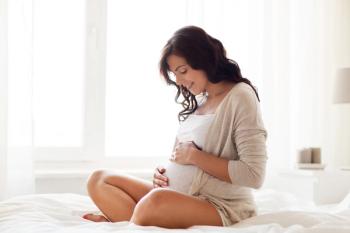
Gauging a transdermal contraceptive system by BMI
The new analysis, which was presented virtually at the 2021 American College of Obstetricians and Gynecologists (ACOG) Annual Clinical and Scientific Meeting, concludes that the TDS maintained similar safety and tolerability in the 2 groups of women.
The new transdermal contraceptive system (TDS) of levonorgestrel/ethinyl estradiol was found in the original analysis to have lower but acceptable efficacy among women with a body mass index (BMI) between 25 kg/m2 and 30 kg/m2 compared to women with a BMI of less than 25 kg/m2.
That original analysis prompted a post hoc analysis of other aspects, such as safety and tolerability, by BMI.
The new analysis, which was presented virtually at the 2021 American College of Obstetricians and Gynecologists (ACOG) Annual Clinical and Scientific Meeting, concludes that the TDS maintained similar safety and tolerability in the 2 groups of women.
The analysis used data from the phase 3, single-arm, open-label, 1-year (13-cycle) SECURE study, which assessed the TDS Twirla patch (Agile Therapeutics), designated for use in 28-day cycles in adult women at risk for pregnancy.
“The SECURE study was purposefully designed to include women who were representative of modern American women,” said lead author Anita Nelson, MD, a professor and chair of ob/gyn at Western University of Health Sciences in Pomona, California. “These women reflect America’s diversity in race, ethnicity and BMIs. The data lets clinicians know who are candidates for the patch.”
The intent-to-treat population for the analysis comprised 1,123 women: 684 women with a BMI < 25 kg/m2 and 439 women with a BMI of 25 kg/m2 to 30 kg/m2. Reported inconsistent use was ≤0.8% over 13 cycles.
The Pearl Index (pregnancies per 100 woman-years) and percent effectiveness (cumulative life-table analysis at cycle 13) for women with a BMI less than 25 kg/m2 was 3.46 (95% confidence interval [CI]: 1.77 to 5.16) pregnancies, as opposed to 5.69 (95% CI: 2.99 to 8.40) for women with a BMI between 25 kg/m2 and 30 kg/m2.
The TDS Twirla patch was found 97.0% and 94.6% effective in women with a BMI < 25 kg/m2 and a BMI from 25 kg/m2to 30 kg/m2, respectively.
However, women with a BMI less than < 25 kg/m2 reported slightly higher rates of discontinuation due to treatment-emergent adverse events (TEAEs): 12.6% vs. 10.5% for a BMI between 25 kg/m2 and 30 kg/m2.
Serious TEAEs for the two groups were 1.6% vs. 1.0%, respectively; hormone-related TEAEs were 24.4% vs. 20.5% (most commonly nausea, headache, acne and dysmenorrhea), respectively; and application-site AEs were 5.3% vs. 6.4%, respectively.
“These results should reassure clinicians that from a safety and tolerability perspective, both groups of women had very similar and positive experiences,” Nelson told Contemporary OB/GYN®.
The availability of the new low-dose estrogen patch may still be news to busy clinicians, according to Nelson. “The FDA labeling suggests special counselling about reduced effectiveness in the 25 kg/m2to 30 kg/m2BMI range,” she said. “Our analysis demonstrates to clinicians that this special counselling refers to issues about the Pearl Index, not to side effects or tolerability.”
The clinical ramifications of the study “follow directly from the data, showing that there are only minor differences in safety and tolerability of the patch between the two BMI groups of women,” said Nelson, who also is medical director of research at Essential Access Health in Los Angeles.
Although comparative postmarketing studies of the TDS Twirla patch are required by the FDA for thrombosis, “one of the most frequently asked questions by patients is about the potential for extended cycle use of the patch,” Nelson said. “There is a need for more data around this query. We hope to study this low-dose patch further to extend its convenience.”
__
Disclosure
Nelson is a consultant and advisor to Agile Therapeutics. She also receives grants and research support from the company.
Reference
- Nelson, A. “Efficacy and Safety of Levonorgestrel/Ethinyl Estradiol, a Transdermal Contraceptive System, by BMI.” Presented at: The American College of Obstetricians and Gynecologists 2021 Annual Clinical and Scientific Meeting; April 30 – May 2, 2021.
Newsletter
Get the latest clinical updates, case studies, and expert commentary in obstetric and gynecologic care. Sign up now to stay informed.











